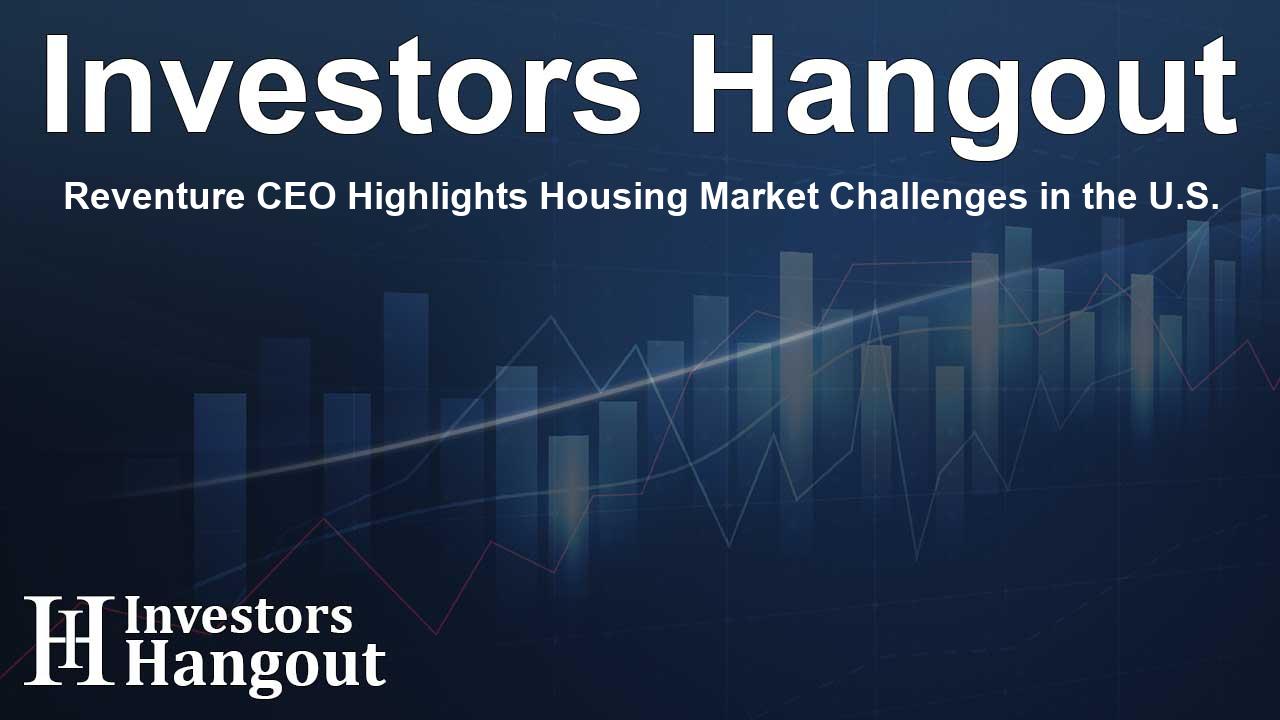Reventure CEO Highlights Housing Market Challenges in the U.S.

Housing Market Challenges Examined by Reventure CEO
Reventure Consulting CEO Nick Gerli has pointed out troubling signs within the U.S. housing market, even as mortgage rates show a decline. While interest rates may have eased, the demand from homebuyers remains weak. Recent statistics reveal a staggering 57% drop in mortgage applications from their pandemic peak, which is even 43% lower than levels observed before the pandemic.
Buyer Demand Continues to Decline
Despite expectations of a quick market recovery corresponding to lower financing costs, the reality has been quite different. The ongoing dip in buyer interest has caught many in the real estate sector by surprise, exposing problems that go beyond mere mortgage rates. Gerli emphasizes that three significant factors are contributing to this subdued demand: challenges in affordability, buyer fatigue post-pandemic, and exceptionally low confidence in the housing sector.
Consumer Sentiment Reflects Market Concerns
As per research conducted by the University of Michigan, an overwhelming 87% of consumers feel that now is a bad time to purchase a home. This sentiment surpasses even the apprehension felt during the early 1980s, when mortgage rates peaked at a daunting 18%.
Current Home Value-to-Income Ratio
One of the most alarming indicators highlighted by Gerli is the existing home value-to-income ratio, which currently sits around 4.6. This figure is significantly above historic averages and closely rivals ratios observed during periods of market distress, such as the 2006 housing bubble, which was at 4.4, and the post-World War II economic boom, where it approached 5.0. Historically, both of these instances led to major corrections in housing affordability.
Insights on Market Normalization
Gerli asserts that the U.S. has never maintained a housing market operation at such high cost relative to incomes for an extended period. To realign the market, a reduction in home prices or a rise in incomes is necessary. After the 2006 bubble, a severe price drop recalibrated the market to a more sustainable 3.2 ratio, while the post-war era benefited from strong wage growth, promoting affordability improvements over time.
Market Predictions and Future Outlook
Looking into the future, Gerli speculates that a combination of declining home prices and rising incomes might be on the horizon. Some regions of the U.S. may witness quicker price corrections, particularly areas where housing supply has surged, such as specific markets in the Sun Belt. Cities like Austin have already exemplified how rapidly home values can shift when circumstances change favorably. Conversely, markets in the Northeast and Midwest may experience prolonged stagnation due to tight supply constraints.
Path to Recovery May Take Time
Gerli forecasts that achieving market normalization may take several years, given that it requires a sustained drop in mortgage rates, time for price adjustments, and wage growth to restore buyer confidence. This timeline represents a stark contrast to more optimistic predictions circulating within the industry. Current data indicates that fundamental buyer demand remains weak, a trend traceable back to late 2021 when mortgage rates were still comfortably below 3%.
Economic Factors Impacting Housing Market
The housing market is facing significant uncertainties, exacerbated by potential economic recession risks, which may trigger faster price corrections in areas with overvaluation issues. Recently, numerous potential buyers have found themselves sidelined due to financial barriers and pervasive skepticism regarding prevailing market conditions.
Frequently Asked Questions
What are the current trends in the housing market?
The housing market is experiencing declining buyer demand and persistent affordability constraints.
What are the primary factors affecting buyer demand?
Key factors include affordability challenges, buyer fatigue post-pandemic, and low consumer confidence.
How high is the current home value-to-income ratio?
The home value-to-income ratio stands at around 4.6, which is significantly higher than historical norms.
What happened after the 2006 housing bubble?
After the 2006 bubble, home prices dropped significantly, leading to a more balanced market with a lower value-to-income ratio.
What might be the future outlook for the housing market?
The market may take years to normalize, potentially requiring a combination of falling prices and rising incomes.
About Investors Hangout
Investors Hangout is a leading online stock forum for financial discussion and learning, offering a wide range of free tools and resources. It draws in traders of all levels, who exchange market knowledge, investigate trading tactics, and keep an eye on industry developments in real time. Featuring financial articles, stock message boards, quotes, charts, company profiles, and live news updates. Through cooperative learning and a wealth of informational resources, it helps users from novices creating their first portfolios to experts honing their techniques. Join Investors Hangout today: https://investorshangout.com/
Disclaimer: The content of this article is solely for general informational purposes only; it does not represent legal, financial, or investment advice. Investors Hangout does not offer financial advice; the author is not a licensed financial advisor. Consult a qualified advisor before making any financial or investment decisions based on this article. The author's interpretation of publicly available data shapes the opinions presented here; as a result, they should not be taken as advice to purchase, sell, or hold any securities mentioned or any other investments. The author does not guarantee the accuracy, completeness, or timeliness of any material, providing it "as is." Information and market conditions may change; past performance is not indicative of future outcomes. If any of the material offered here is inaccurate, please contact us for corrections.